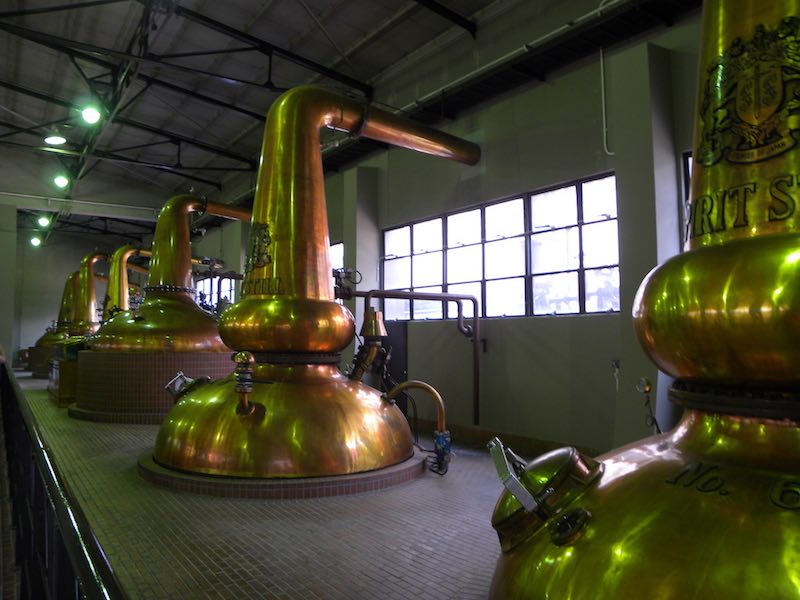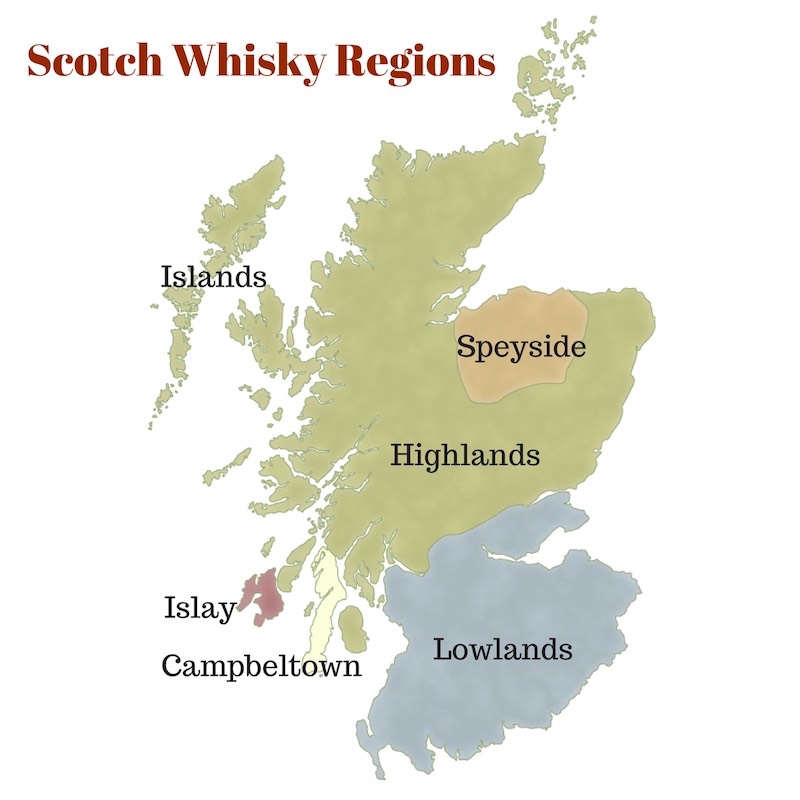Latest News
Kitchen Chat and more…
Kitchen Chat and more…
The distillery of The Dalmore is housed in Alness, some 32km North of Inverness. It is located at the banks of the Cromarty Firth overlooking the Black Isle.
The Dalmore sits on a legend that dates back to 1263, where Colin of Kintail, the then Chief of the clan Mackenzie, acted in good faith to save King Alexander III of Scotland from a charging stag during a hunt. Colin of Kintail killed the stag with a spear in its forehead, shouting “Cuidich ‘n’ Righ” – Gaelic for “Save the King” as he struck the killing blow. The grateful king awarded Brave Colin the lands of Eilean Donan and the motto “Luceo Non Uro” which means “I Shine, Not Burn”. Colin of Kintail and the clan of Mackenzie were also granted the right to bear a 12-pointed Royal Stag as their crest.
The distillery of The Dalmore was established in 1839 by entrepreneur Alexander Matheson. He searched for the perfect location for his distillery, but he wanted something that was different from the others. Not willing to give in to creature comforts in Speyside, where many other distilleries were located, Matheson strived to find the perfect location in which the best natural resources could be used to make the finest whisky. He finally settled on the isolated area at the banks of the Cromarty Firth, in full mercy of the harsh winds from the North Sea. On this wild uninhibited land, Matheson built everything from scratch – from warehouses to railways. This uniqueness of its founder is the reason that The Dalmore continues to have its own unique character and taste up till today.
After running The Dalmore for 28 years, Alexander Matheson wanted to pass the distillery to new owners in 1867. At this time, Andrew and Charles Mackenzie took over the helm of The Dalmore, gifting the iconic 12-pointed Royal Stag emblem to the brand. Their passion for creating exceptional whiskies fuelled a whole new era in the history of The Dalmore. That passion stands up till today, where Master Distiller Richard Paterson continues to create exceptional whiskies for The Dalmore.

Most people would know Scotch whisky as single malts, but there are also other forms of Scotch whiskies that you should know so that you can enjoy whisky completely! In this article, we will share a little about the different categories to pip your curiosity!
The Scotch Whisky Regulation 2009 defined five different categories of Scotch Whisky to regulate how Scotch whiskies are made and marketed across the world. The relevant category must be labelled clearly and prominently on every bottle of Scotch whisky that are sold around the world.
A single malt Scotch whisky must be distilled in a single distillery from water and malted barley without adding any other cereals. It must be batch distilled in pot stills and bottled in Scotland.
A single grain Scotch whisky must be distilled in a single distillery from water, malted barley and the addition of whole grains of other malted or unmalted cereals. Some Scotch whiskies which does not comply with the definition of single malt Scotch Whisky are also labelled as a single grain Scotch whisky
A blended Scotch whisky is simply a blend of one or more single malt Scotch whiskies with one or more single grain Scotch whiskies.
A blended malt Scotch whisky is a blend of single malt Scotch whiskies which have been distilled at more than one distillery.
A blended grain Scotch whisky is a blend of single grain Scotch whiskies which have been distilled at more than one distillery.
The changes made in the Scotch Whisky Regulation 2009 acts as a better protection for traditional regional names that produce Scotch whiskies, that is, the names of Highlands, Lowlands, Speyside, Islay and Campbeltown. These names can only be put on the labels of whiskies which have been wholly distilled in the regions. A distillery name cannot be used as a brand name on any Scotch Whisky that is not wholly distilled in the named distillery. Labelling of every bottle of Scotch whisky is strictly monitored so as not to mislead consumers as to where the Scotch Whisky has been distilled.
These regulations also provide for better protection for consumers who are buying Scotch whiskies all over the world. It helps to keep fraud down to the minimum. Besides, such regulations also help consumers to better understand where each bottle of whisky came from.

For a start, we are going to talk about the Scotch Whisky regions, mainly because Scotch whiskies are so popular all over the world, including Singapore. There are originally only 4 main whisky-making regions – Highlands, Lowlands, Islay and Campbeltown. As the distilleries grew in numbers over the years, Speyside (which was originally part of the Highlands) was recognised as one of the whisky-making region on its own because of the sheer number of distilleries located in the locale. As of 2013, there were 105 distilleries located in the locale that is defined by the river Spey.
The Islands are never recognised officially by the Scotch Whisky Association, the main authority on Scotch whiskies. However, over the years, the whisky distilleries located in the Islands are allowed to put the name of the island that the whisky is made in on the label of the bottle as long as the golden nectar is distilled wholly in Scotland. This make the whiskies in the Island known to the world and now they are unofficially known as the 6th region in Scotland.
The different regions are generally known for the different profiles of whiskies that they made. Each region is famous for a particular type of profile since the whiskies take on the characteristics of the land they are created in. Here’s a simple description of the whisky flavours in each region.
The Highlands are marked as the biggest whisky-making region in Scotland, hence, it is not surprisingly to find a wide range of flavours here. You get the light and fruity styles in the Southern Highlands and the more spicy and full-bodied ones in the Northern Highlands.
Speyside is defined by the river Spey, which runs through this region and provides water to many of the distilleries located here. The whiskies made in Speyside are recognised as the most complex of the lot in Scotland and most of them carries sweet aromas and sophisticated flavour profiles.
The Lowlands are no longer a popular location for whisky distilleries and only three distilleries are still in operation in the Lowlands – Auchentoshan, Blandoch and Glenkinchie. This area is well known for light-bodied single malt whiskies.
Campbeltown is a seaside region is which the sea is a heavy influencer on the whiskies produced. The golden nectar from this region usually carry the sea and brine of the region as well as the peat that is popularly used in the production of whisky.
Islay is another seaside region that is well known for its peaty and strong-flavoured whiskies. They tend to be smoky and rather extreme in taste due to the various extremities of the sea that surrounded the area.
The Islands are a group of islands that produce whiskies that are in between the sweet aromas of the Highlands and the peaty ones of Islay.
It is obvious that Scotch whiskies are a complicated lot, but they are interesting. We will continue to bring you new details about these beautiful liquids whenever possible, so stay tuned for more!
11311 Harry Hines Blvd
Dallas, TX, United States
(555) 389 976
dallas@enfold-restaurant.com
